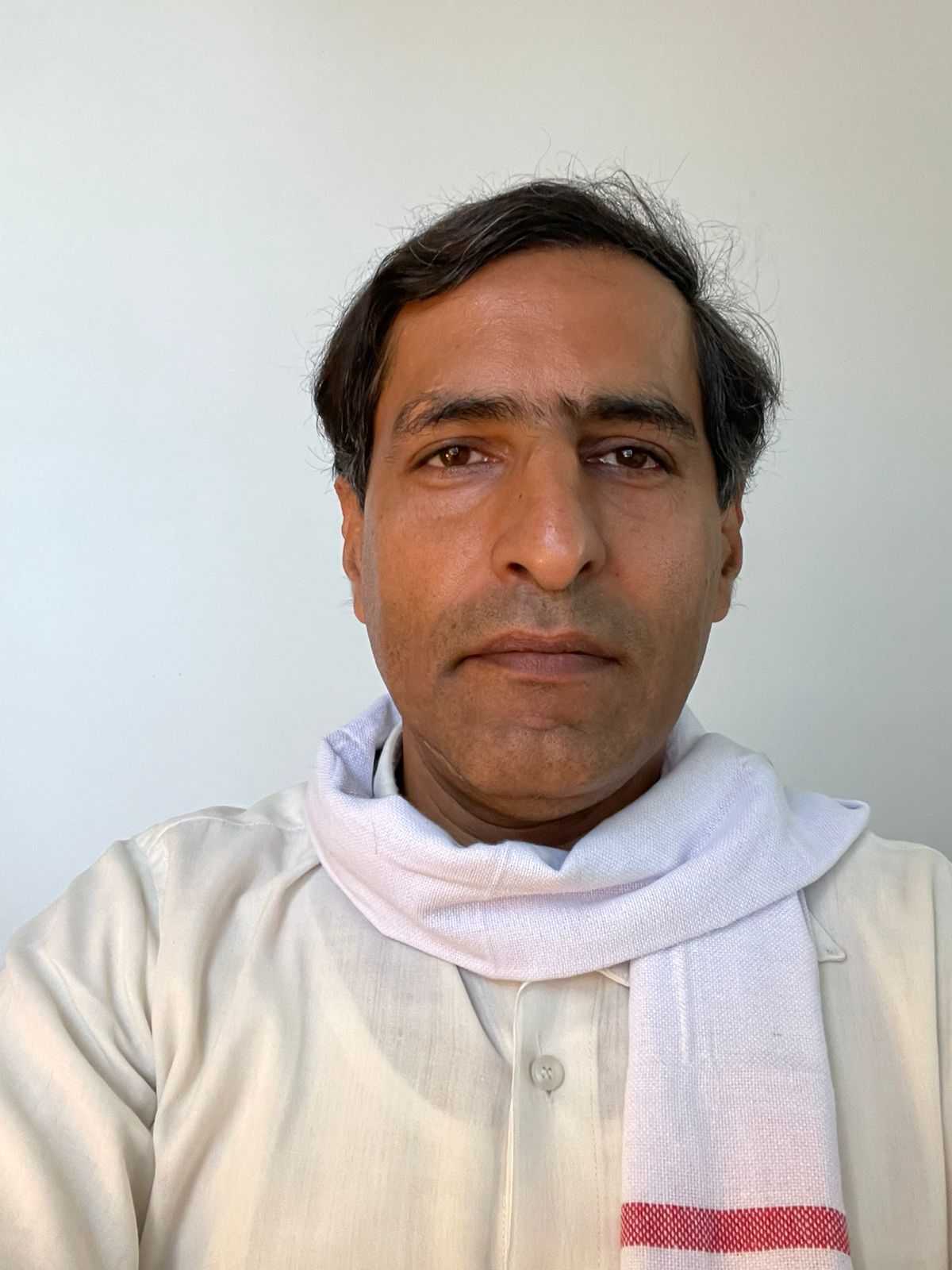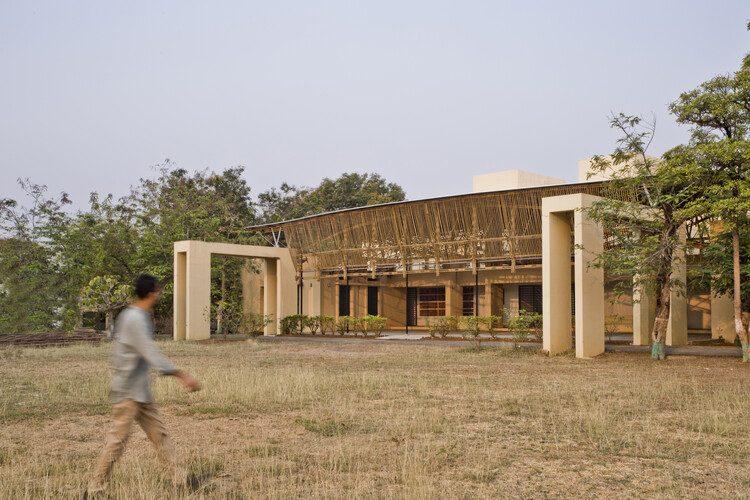Architect Sankalpa and Thumb
Impressions Collaborative:
Pioneers in Sustainable
Wood Design
 SANKALPA
Architect
SANKALPA
Architect
Thumb Impressions Collaborative (TIC) is a renowned
architecture and furniture design firm known for its
commitment to the environment and sustainable
practices. Led by the talented architect and academic,
Sankalpa, the collaborative has created a niche for itself
by incorporating salvaged wood and teak from Valsad,
Gujarat, into their projects. During an insightful interview,
we had the privilege of interacting with Sankalpa, who
graciously shared his invaluable insights into Thumb
Impressions Collaborative’s wood sourcing practices,
quality standards, and the challenges they encountered
when using wood in their projects.
Sankalpa, the co-founder of Thumb Impressions, is
an architect and academic who has been teaching at
the Faculty of Architecture CEPT University (Centre for
Environmental Planning and Technology) in Ahmedabad,
India since 2008. Holding the position of program chair
for the master’s in architectural tectonics at CEPT,
Sankalpa’s work seamlessly merges academia with
practice. He focuses on the engagement of the body with
structural forces as a means to experience architecture.
Additionally, his research explores the integration of
industrial and natural materials, particularly timber and
bamboo, in response to the environmental crisis.
One of the key aspects that sets Thumb Impressions
Collaborative apart is their preference for salvaged
wood or teak sourced from Valsad, Gujarat. With a
deep commitment to minimizing the negative impact
on the environment, they prioritize the use of salvaged
wood whenever possible. By repurposing wood, they
eliminate the need for tree cutting and actively promote
sustainability in their projects.
Wood sourcing is a crucial consideration, and at Thumb Impressions Collaborative, they ensure responsible
practices in this area. For teak, their vendors acquire the
wood through the forest department auction held in Dang,
Gujarat. Additionally, they have established a dedicated
supply chain and reliable vendors to provide a consistent
availability of reclaimed wood for their projects.
Evidently, sustainability remains at the forefront
of Thumb Impressions’ philosophy, and they take
extensive measures to ensure that the wood they use
is sourced sustainably. When obtaining wood through
auctions, they rely on the forest department’s guidance
regarding the type of wood available, enabling them
to make informed choices. Moreover, their use of
salvaged wood inherently promotes sustainability, as it involves the reuse of materials instead of cutting down
new trees.

Protection against pests and decay is essential for the
longevity of their projects. Fortunately, salvaged wood is
typically well-seasoned and requires minimal protection
in this regard. Local wood also poses no significant
problems with pests or decay. However, to safeguard
against moisture-related issues, Thumb Impressions
Collaborative applies a Polyurethane coating to their
wood creations.
The practical application of wood in Thumb Impressions
Collaborative’s projects is truly inspiring. Sankalpa
highlights the harmonious balance achieved by
combining wood with materials like steel and brass.
In their architecture projects, the fusion of wood
and steel creates a visually stunning and structurally
sound result. In furniture design, wood complements
metals such as brass, enhancing the overall aesthetic
appeal.
Ensuring high-quality standards and prioritizing safety is
paramount in architectural design. Thumb Impressions
Collaborative adheres to these principles through rigorous
tests on the load-bearing capacity of the wood they use.
Fire resistance measures, including the installation of
fire hydrants and other safety precautions, are diligently
implemented to ensure the utmost safety for occupants.
Hybrid structures that combine wood with materials like
steel and concrete have gained popularity in architectural
design and they have extensive experience in this area,
primarily utilizing steel alongside wood. This strategic
combination offers the desired strength and serves as a
mutually advantageous choice for both materials.
Adaptability to local climate and weather conditions is a
critical aspect of successful architectural projects. Thumb
Impressions Collaborative follows a logical approach
by sourcing materials that are indigenous to similar climatic regions. However, they acknowledge the impact
of moisture on wood and employ effective techniques to
mitigate such concerns.
While Thumb Impressions Collaborative’s commitment
to sustainable wood design is commendable, they do
face certain challenges. Sankalpa highlights the issue of
moisture in teak wood, which necessitates the application
of a Polyurethane coating. Additionally, salvaged wood
sourced from old furniture, windows, and doors may
present challenges such as nails or cracks that require
careful consideration during the design and construction
phases.
Despite these challenges, they have managed to establish
a network of vendors and retain their focused approach
to wood sourcing to ensure a streamlined process. Their
limited wood requirements, coupled with their dedication
to quality, enable them to navigate the industry smoothly.
Looking ahead, Sankalpa envisions a brighter future for
the Indian woodworking industry by outlining necessary
steps. He suggests increasing tree plantation efforts
to secure a sustainable supply of wood. Moreover,
incorporating bamboo alongside wood could alleviate
the strain on wood resources, presenting an eco-friendly
alternative.
Architect Sankalpa and Thumb Impressions Collaborative
exemplify a forward-thinking approach to sustainable
design. Their emphasis on utilizing salvaged wood,
promoting environmentally conscious practices, and
pushing the boundaries of combining timber and
bamboo materials sets them apart in the architectural
world. As the field continues to evolve, Sankalpa and
Thumb Impressions Collaborative remain at the forefront,
envisioning a greener and more sustainable future for
construction and design.